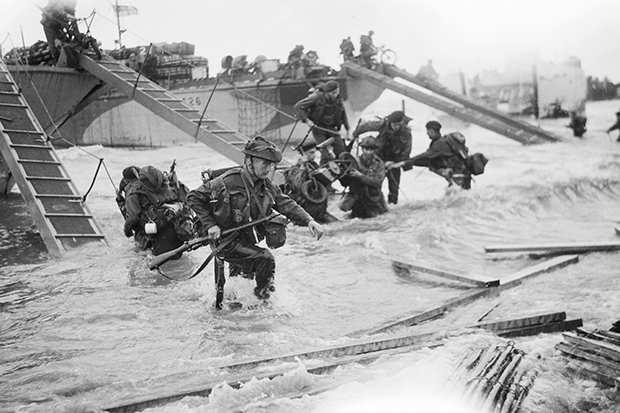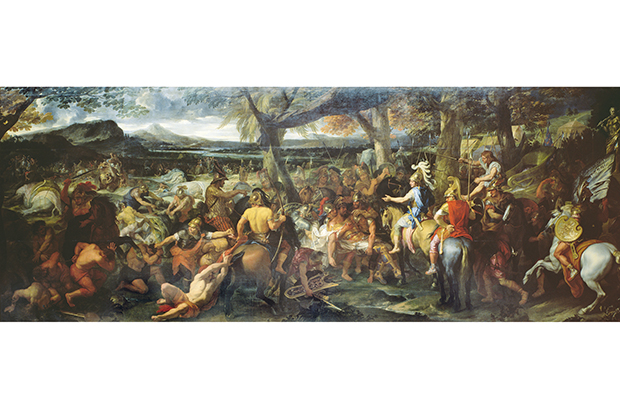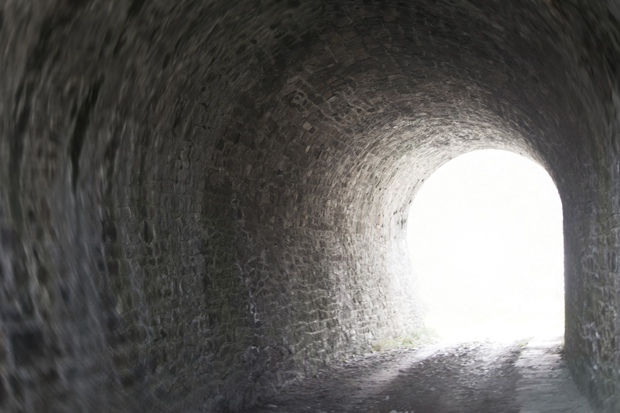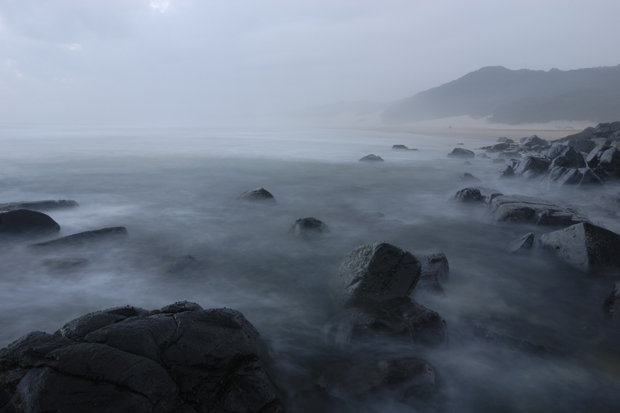The tour guides of Ephesus, in Turkey, have a nice party trick to wake up their dozing coach passengers. As the coach drives along, they say, ‘This is the ancient port of Ephesus’, and the passengers look, as I did, at fields and trees and nothing else. They peer for the sea and are told it is miles away. Ephesus was a major river port in antiquity but the river has long since silted up and left its port stranded. This fact isn’t in Aldersey-Williams’s book on tides but there are plenty more to be told of the curious, attritional relationship of humans and the tidal waters of the planet.
Don’t be put off by the two muted squibs that open the book: an unexciting tale of sailing that you’ve read a thousand times elsewhere, then a colossally English endeavour set on an ordinary creek in Norfolk, where Aldersey-Williams lives, and where he decides to watch a full tide cycle, for 13 hours. He does his best to provide drama, but froth and tiny tidal creatures can only provide so much. Living humans don’t provide much drama, either. They are surprisingly colourless: even Cedric Robinson, the Queen’s Guide to the Sands for the last 50 years. More interesting than Cedric in this portrayal are the terrifying tides of the sands, which can fill the huge bay with six billion cubic metres rushing in at ten miles an hour.
Perhaps Aldersey-Williams prefers water to people. Even when he builds up his trip to find the Maelstrom of myth — actually a well-known tidal zone in Norway — the result is disappointing. He stands on a ledge to watch the water move, when his reverie is ‘spoiled’ by a boatload of people heading into the maelstrom. ‘The lead driver waves to me. Tosser, I think.’ This bizarre snobbery pops up throughout: when he encounters a film crew filming The Suspicions of Mr Whicher on the banks of the Thames, he is sure that his attempt to emulate the mudlarks of old is a much higher class of activity. Other people are generally dismissed as ‘tourists’, an unappealing trend I’ve noticed elsewhere.
It’s a shame, because Aldersey-Williams also serves us shoals of dizzying facts and history, even though I fizz with frustration at not being told exactly how tides work until halfway through the book, and though I have to consult the glossary to know what a foul or neap tide is. Answers: tides are a result of complicated interaction between the Moon, the Sun (which exerts nearly half as much tide-generating force as the much closer Moon) and the Earth. It’s most helpful to think of them as the product of a giant wave, pushing in parts and pulling in others. It is a strange concept, that one sea can have more tides than others, but the Mediterranean has very few, while the Bay of Fundy has the highest tides in the world, shifting four million cubic metres per second. Oceanographers translate this using a unit called the ‘sverdrup’, named after a Norwegian scientist. But if you still struggle to comprehend what four sverdrups a second consists of, let me translate: a terrifying amount of water comes and goes with terrifying force and terrifying speed. Even if, as Aldersey-Williams finds out, it may not look like much.
Tides are intensely complicated because their height and impact depends on the attraction of the Earth, Moon and Sun, but also on the shape of coastlines, wind speed, and the shape of the Earth. No wonder humans took millennia to understand them, from Aristotle puzzling over the currents of Chalcis, to Galileo’s efforts to make sense of tides despite ignoring the influence of the Moon. Isaac Newton depended on the astronomical calculations of Anthony Flamsteed, Astronomer General, to become the first to understand the major role of the Sun in creating tides. His treatment of Flamsteed — publishing Flamsteed’s life’s work, a star catalogue, without Flamsteed’s permission, and with unsanctioned amendments — was less impressive.
Tides can create and break civilisations (for example, Ephesus) that depend on them for shipping, trade and existence. They can kill, of course, as in the tragedy of the 27 Chinese cockle-pickers drowned by the sea off Morecambe. And they can win wars. The Dutch queen Wilhelmina once visited the belligerent Kaiser William II. When he remarked provocatively how much taller his guards were than hers, the queen is said to have replied, ‘True, your majesty, your guards are seven feet tall. But when we open our dykes, the water is ten feet deep.’ The Netherlands was not visited by the Kaiser’s army. The Dutch historical geographer Adriaan de Kraker has calculated that a third of all floods in parts of the Netherlands since 1500 have been deliberately incurred as defensive measures.
My favourite section of the book is on the role of tides in the D-Day landings. It comes in a charming chapter linking music to tides, because the Victorians invented wonderful analogue machines to calculate tide times that relied on harmonics. The planners of D-Day used one of these machines, from 1872, to predict which day was best for the landings: arriving too early would mean waiting offshore and losing the surprise element; arriving too late meant an ebbing tide would make it harder to advance up the beaches. The harmonics got it right: Field Marshal Erwin Rommel was so convinced that the high tide arrived too late for a landing on 6 June that he took the day off to celebrate his wife’s birthday.
The post Making waves appeared first on The Spectator.
Got something to add? Join the discussion and comment below.
Get 10 issues for just $10
Subscribe to The Spectator Australia today for the next 10 magazine issues, plus full online access, for just $10.
You might disagree with half of it, but you’ll enjoy reading all of it. Try your first month for free, then just $2 a week for the remainder of your first year.














Comments
Don't miss out
Join the conversation with other Spectator Australia readers. Subscribe to leave a comment.
SUBSCRIBEAlready a subscriber? Log in